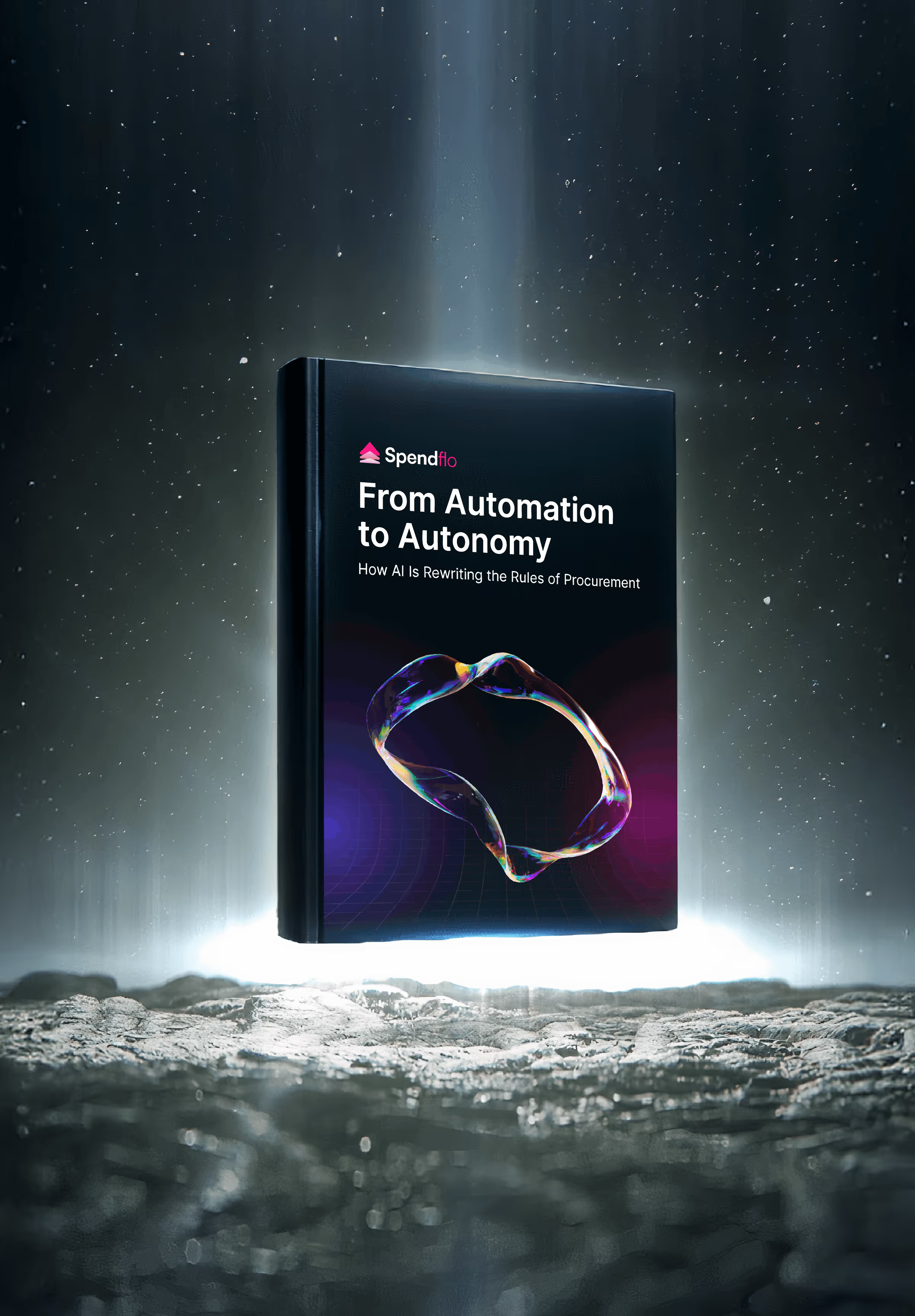

Notes Payable vs Accounts Payable: What’s the Difference?

Notes Payable vs Accounts Payable: What’s the Difference?
Understand the difference between notes payable and accounts payable, their impact on cash flow, and how to manage them without costly errors.


According to a 2024 Deloitte report, nearly 40% of finance leaders say tracking short- and long-term payables is one of their biggest reporting challenges. With SaaS costs and vendor contracts piling up, even a small mix-up in how debts are recorded can impact budgets and compliance.
That’s why understanding the difference between notes payable and accounts payable matters. Both represent what a business owes, but they’re not interchangeable, and getting them right keeps your financial reporting accurate and your vendor relationships healthy.
What is Notes Payable?
Notes payable are written promises where a business agrees to repay borrowed money, usually with interest by a specific date. They’re formal obligations to banks or lenders and appear on the balance sheet as either short-term or long-term liabilities, depending on the repayment period.
What is Accounts Payable?
Accounts payable refers to the short-term amounts a business owes to suppliers for goods or services already received but not yet paid for. These routine debts are typically interest-free when settled promptly and are listed under current liabilities on the company’s balance sheet.
Why Understanding Notes Payable vs Accounts Payable Matters
Accurately distinguishing between notes payable and accounts payable is crucial for maintaining financial health. Misclassifying these obligations can lead to costly mistakes, poor decision-making, and procurement compliance issues.
Avoiding Financial Mismanagement
Properly categorizing liabilities ensures businesses clearly understand how much they owe, to whom, and under what terms. Confusing notes payable with accounts payable can result in missed loan payments, unexpected interest charges, or strained vendor relationships, all of which can quickly escalate into broader financial mismanagement.
Ensuring Accurate Financial Reporting
Financial statements serve as a vital tool for investors, lenders, and internal decision-makers. Incorrectly reporting notes payable and accounts payable skews key financial ratios and misrepresents the company’s true financial position. Clear classification allows for accurate balance sheet reporting, appropriate income statement disclosures, and better audit readiness.
Managing Short-Term and Long-Term Liabilities
Notes payable often involve longer repayment periods and interest obligations, while accounts payable typically reflect short-term trade debts. Understanding this distinction allows companies to prioritize payments, forecast obligations accurately, and avoid liquidity crunches that could jeopardize day-to-day operations.
Supporting Strategic Cash Flow Planning
Effective cash flow management depends on knowing when payments are due and how much needs to be allocated for debt servicing. Misunderstanding the nature of liabilities may lead to cash shortfalls or the inability to seize growth opportunities. Clear differentiation enables businesses to balance operational needs with debt obligations confidently.
Strengthening Vendor and Creditor Relationships
Vendors and lenders expect businesses to meet their obligations reliably. Timely payments foster trust, open doors to better credit terms, and enhance negotiation leverage. Consistent, accurate financial management signals stability, which can lead to stronger partnerships and more favorable financing arrangements over time.
Key Accounting Differences Between Notes Payable and Accounts Payable
Notes payable and accounts payable are both liability accounts but serve distinct financial roles. They differ in source, formality, repayment structure, financial impact, and accounting treatment. Notes payable typically include interest payments based on agreed rates, while accounts payable generally do not.
Here’s a detailed comparison:
Working Capital and Liquidity Impact
Accounts Payable (AP) is part of current liabilities, which directly affects a company’s Current Ratio and Quick Ratio key measures of liquidity. When AP increases, it can temporarily improve working capital impact by allowing businesses to retain cash longer before payment. This is why AP is often considered a form of “free credit.” However, excessive AP can reduce liquidity if obligations pile up faster than cash inflows.
Notes Payable (NP), on the other hand, may be classified as long-term debt. It impacts liquidity differently since repayment schedules extend beyond the current period. While NP can support long-term investments, it doesn’t improve short-term ratios the way AP can. Managing both effectively ensures balanced liquidity and sustainable financial risk reduction.
When Should Businesses Use Notes Payable vs Accounts Payable
Choosing between notes payable and accounts payable depends on the type of expense, payment terms, and overall financial strategy. Each serves a distinct purpose in managing business obligations.
Short-Term Operational Expenses
Accounts payable is ideal for routine, day-to-day business expenses such as inventory purchases, office supplies, or monthly service subscriptions. These short-term obligations typically require payment within 30 to 90 days, helping businesses maintain smooth operations without incurring interest or complex repayment terms.
Major Capital Purchases or Investments
Notes payable are better suited for significant investments like purchasing equipment, acquiring property, or securing large-scale financing. These obligations often involve substantial sums that businesses cannot cover immediately with cash flow. Formal agreements with lenders provide structured repayment schedules, often extending months or years into the future.
Vendor Negotiations and Terms
For large vendor contracts, businesses may negotiate extended payment terms that go beyond typical trade credit. In such cases, suppliers may require a formal note payable agreement to ensure repayment security. This arrangement benefits both parties, offering the vendor reassurance while providing the buyer with more flexible repayment options.
Managing Business Credit and Financial Leverage
Notes payable can strategically support business growth by allowing companies to leverage external financing. Access to long-term credit improves liquidity for expansion while spreading repayments over time. Meanwhile, accounts payable remains a valuable tool for managing recurring supplier obligations without accumulating significant debt.
How Notes Payable and Accounts Payable Impact Cash Flow Management
Effectively managing both notes payable and accounts payable is essential for maintaining healthy cash flow. Each affects a company’s ability to meet obligations, plan for the future, and present financial stability.
Cash Flow Forecasting Accuracy
Accurate classification of payables allows businesses to forecast cash needs with greater precision. Notes payable often involve larger, scheduled payments with interest, requiring careful long-term planning. Accounts payable typically involve smaller, more frequent payments tied to operational cycles. Forecasting both correctly ensures sufficient funds are available when payments come due. Monitoring the accounts payable balance helps businesses plan for upcoming short-term obligations and maintain liquidity.
Debt Repayment Planning
Notes payable demand structured repayment schedules, often over months or years, which must be carefully integrated into long-term financial planning. Missing a payment can trigger penalties or credit downgrades. Accounts payable, while shorter term, still require attention to avoid late fees or strained vendor relationships. Balancing both types ensures steady outflows without disrupting daily operations.
Impact on Liquidity Ratios
How a company manages these liabilities directly affects liquidity ratios such as the current ratio and quick ratio. An increase in short-term notes payable may reduce liquidity, signaling potential strain to investors or lenders. Properly managing accounts payable within agreed terms supports strong liquidity metrics, indicating solid financial health.
Maintaining Creditworthiness
Timely payments on both notes and accounts payable build trust with lenders and vendors. Strong credit histories enable businesses to secure favorable financing terms in the future. This credibility also allows businesses to negotiate better terms with credit companies and financial institutions. Conversely, delinquent payments or mismanagement of obligations can damage credibility and limit access to additional capital.
Common Mistakes Businesses Make with Notes Payable and Accounts Payable
Even financially healthy businesses can stumble if they mishandle how they track and manage notes payable and accounts payable. Recognizing common mistakes helps prevent costly errors and supports stronger financial management.
Mixing Up Liability Classifications
One of the most frequent errors is misclassifying notes payable as accounts payable, or vice versa. This mistake distorts financial statements and skews key financial ratios, potentially misleading stakeholders. Accurate classification ensures liabilities are reported in the correct current or long-term sections of the balance sheet.
Ignoring Interest Obligations on Notes Payable
Unlike accounts payable, notes payable often carry an agreed interest rate that must be carefully tracked. Some businesses overlook these ongoing costs, underestimating total repayment obligations. Ignoring accrued interest can lead to unexpected expenses that disrupt cash flow and financial planning. Interest must be carefully tracked and recorded in financial statements.
Late or Missed Payments
Whether for notes or accounts payable, delayed payments damage vendor and lender relationships, incur penalties, and negatively impact credit ratings. Missed deadlines for notes payable can trigger legal consequences or default clauses, while overdue accounts payable can lead to strained supplier trust and disrupted supply chains.
Lack of Documentation and Audit Trail
Incomplete or poorly maintained records for payables make audits difficult and increase the risk of financial errors. Clear documentation of contracts, invoices, payment schedules, and correspondence is essential. A solid audit trail supports compliance, protects against disputes, and strengthens internal controls.
Best Practices for Managing Notes Payable and Accounts Payable
Effective management of notes payable and accounts payable helps businesses maintain financial control, avoid costly errors, and build strong relationships with creditors and vendors. Adopting these best practices ensures accuracy and long-term stability.
Implement Clear Accounting Policies
Establish clear internal policies that define how liabilities are classified, documented, and reported. Train staff on the differences between notes payable and accounts payable to prevent misclassification. Consistent accounting policies ensure compliance with financial reporting standards and reduce the risk of audit issues.
Leverage Automation Tools for Tracking
Manual tracking of payments increases the risk of oversight, especially as the volume of transactions grows. Automation software can schedule payments, calculate interest on notes payable, and flag upcoming due dates. Automated workflows minimize human error, provide real-time visibility, and ensure obligations are consistently met on time. Efficient invoice processing ensures vendor payments are validated, approved, and recorded accurately within the system.
Regular Financial Reconciliation
Reconcile liabilities frequently to ensure financial records match outstanding obligations. Compare accounting system records against bank statements, loan agreements, and vendor invoices. This includes verifying interest payable amounts recorded for outstanding notes to ensure accuracy. Regular reconciliation catches discrepancies early, supports cash flow planning, and ensures accurate reporting for management and auditors. Timely updates to the general ledger ensure liabilities and payments are reflected correctly in financial records.
Maintain Transparent Vendor Communication
Strong communication with vendors and lenders reduces misunderstandings and allows for renegotiation if financial circumstances change. Proactively discussing payment terms, possible extensions, or alternative arrangements builds trust and ensures ongoing cooperation, even during periods of financial strain.
How Spendflo Helps Streamline Vendor Payments and SaaS Contract Management
When vendor payments slip through the cracks, the ripple effect can be costly, delayed renewals, missed discounts, and strained supplier relationships. One Spendflo customer, a fast-growing SaaS firm, reduced payment delays by 60% and saved over $400K annually after centralizing contract renewals and approvals with Spendflo.
Without a unified system, finance teams spend hours reconciling invoices and chasing visibility across tools. With Spendflo, you don’t have to. The platform automates approvals, flags renewal risks early, and ensures every payment supports your financial strategy.
Keep your vendor relationships strong and your spend predictable - book a free demo with Spendflo today to take control of your SaaS and vendor payments.
Frequently Asked Questions on Notes Payable vs Accounts Payable
What is the main difference between notes payable and accounts payable?
Notes payable are formal, written agreements to repay borrowed funds, often with interest, while accounts payable are short-term obligations to suppliers for goods or services received on credit.
Can notes payable be considered a current liability?
Yes. If a note payable is due within 12 months, it is classified as a current liability. If repayment extends beyond one year, it appears under long-term liabilities on the balance sheet.
Why is proper tracking of accounts payable important for cash flow?
Accurate tracking ensures timely payments, avoids late fees, maintains vendor trust, and provides clear visibility into short-term cash obligations, allowing businesses to better manage working capital.
How does automation help with managing payables?
Automation reduces human errors, ensures timely payments, calculates interest automatically for notes payable, streamlines approval workflows, and provides real-time insights for better cash flow planning.
What are common challenges businesses face with notes payable?
Businesses often struggle with tracking interest payments, managing complex repayment schedules, ensuring proper classification, and maintaining accurate documentation for audit and compliance purposes.










.png)




.png)










.avif)





